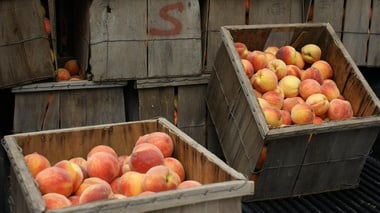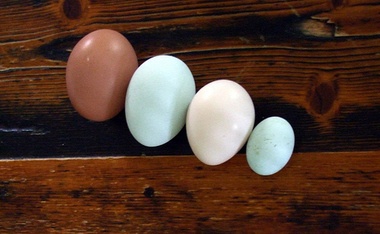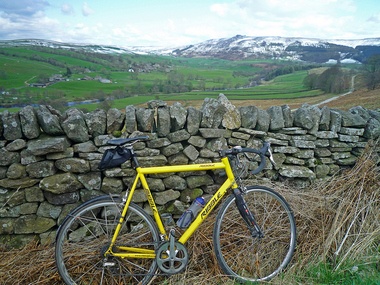You don’t have to knit your own patchouli-scented yogurt and start raising llamas in order to have a greener, more Earth-friendly lifestyle. Sustainable living isn’t about dressing in hemp and reeking of self-righteousness, and it doesn’t mean turning into a folk-music-loving, car-abstaining carbon warrior. It isn’t about radically changing who you are. But you can change a few things you do, to benefit both you and the world we live in.
1. Save on grocery bills.
How often do you get home from the grocery store, having spent another hundred bucks to load up your fridge, only to find you’re chucking out a bag of slimy lettuce that never met a fork, or some lunch meat that’s turned iridescent blue? Make a list, stick to it and be sure to eat what you’ve bought before your next trip to the store. Food waste costs you and the planet, while throwing money at multinational producers and retailers.
2. Not quite freeganism, but—
If there’s a dented box of cereal or a can of baked beans with the label partially torn off, does it makes a difference to the stuff inside? Probably not. Look for items that might be marked down—often just before closing time—to stock your cupboards or freezer and save it from going to waste.
3. Freeze it/Preserve it.
While you’re at it, why not make use of that freezer by stocking it with more than just ice cream. Cook up a big batch of chili or a pasta bake and freeze it to save you time in the kitchen in the future. Or bulk-buy fruits or vegetables that can be canned as jam, chutney or preserved for making a marinara or bbq sauce later.
4. Grow it yourself.
Whether you have just enough room on your windowsill for a few herbs or a backyard just waiting for you to get digging, make 2014 the year you start growing. There are countless websites with advice on what time of year is best to plant certain things, what kind of soil or extra nutrients they need and when and how to start harvesting.
5. Set and eggsample.
Now, not everyone should try raising chickens. If you’re not going to take care of them by building a predator-proof pen with room to roam, or make sure they have a comfortable place to sleep and lay their eggs (that you clean regularly), or enough food and water, don’t bother; but that’s about all chickens need to be happy egg-layers. They’re generally quiet and pretty low-maintenance, and you can learn everything else you need to know through publications such as
6. Go to the source.
Most towns and cities have a regular farmers’ market, where shoppers can buy right from the producers. This supports local growers and vastly decreases the food miles (and carbon footprints) that build up when consumers buy out-of-season fruits and vegetables shipped from the other side of the world. The produce is fresher, tastier and you get a better selection, plus you can ask about growing methods (is it organic or treated with pesticides or herbicides?) and discover new varieties and cooking ideas.
7. Picnic with a difference.
If you live in the country or make weekend escapes to the great outdoors, look for wild foods growing in public areas. Roadsides—unless they are quiet back roads—aren’t ideal for picking berries, fruit or wild salad greens, but you can forage your heart out in parks and other public land. If nothing else, the fresh air and exercise are good for you!
8. Pedal power.
If you don’t have a bicycle, rent one to see what style of bike suits you best. Riding a bike is good for your health and the planet’s.
9. Car pool.
Can you share rides to work? If you’re nowhere near public transportation, you might find like-minded individuals willing to share a lift and cut down on emissions.
10. Walk the walk.
Do you really need to drive everywhere? Whether it’s deliberately taking a space at the far end of a parking structure, finding a pedestrian-friendly way of getting to work or just getting out for an evening stroll—yes, even in the snow—walking is a safe cardiovascular workout that’s as easy on your joints as it is on your environmental impact.
11. Energize your living space.
Homeowners waste a huge amount of money on inefficient houses. Do an energy audit to find out if your windows and doors are sufficiently sealed, if you need newer/more/different insulation and if there are other energy-saving changes you can make. Cut your bills while giving Mother Nature a break.
12. Don’t just dump it.
Rather than sending an old appliance or piece of furniture to an incinerator or landfill, can someone else make use of it? Is there a housing charity, secondhand store or message board where your castoffs can find a new home? Alternatively, you might find free beach chairs, a grill or some curtains on Freecycle or a similar site.
13. Watch what you wash—and dry.
Make sure you’re not doing small loads of laundry and don’t wash it on a higher temperature than is necessary. Can you hang clean laundry on a drying rack or clothesline? You’ll save money without wasting energy.
14. Get creative.
There are countless ways to contribute toward greener living. Whether it’s sharing your skills, getting the message out, starting a car pooling or local recycling group, small steps can add up in big ways.
















































